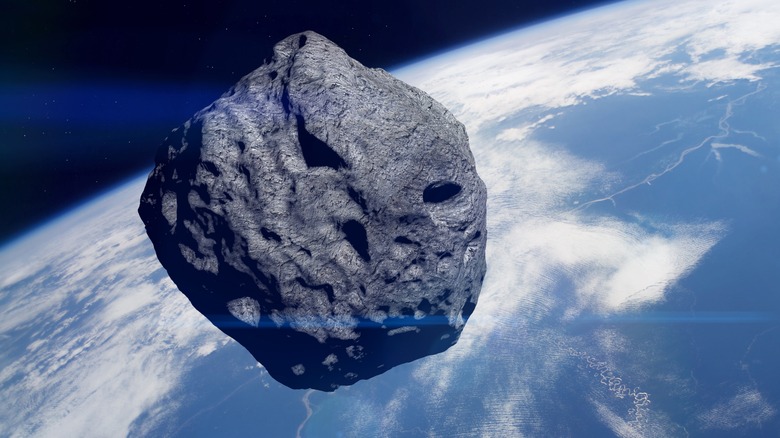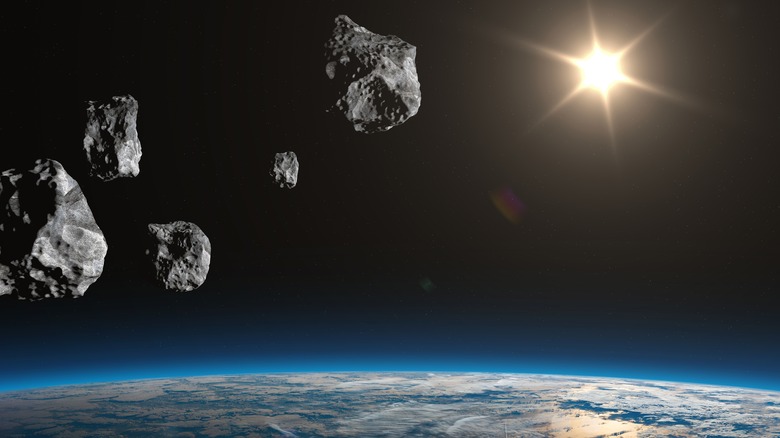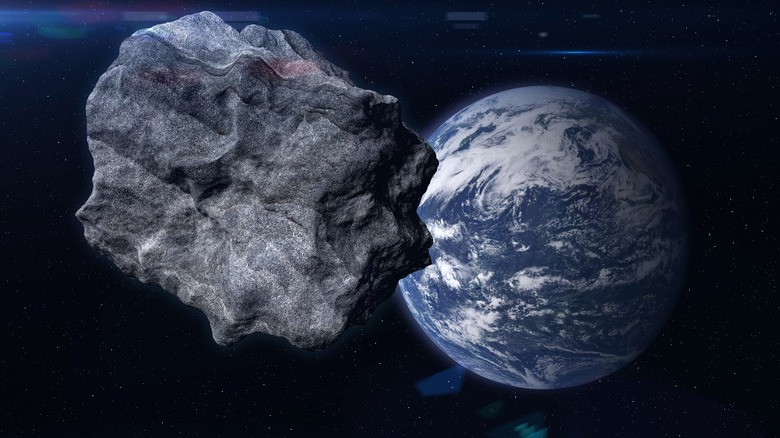There's New Tech To Detect Asteroids. Here's How It Works
A new algorithm called HelioLinc3D developed at the University of Washington (UW) greatly increases the speed by which high-powered telescopes can scan the night sky and possibly discover potentially hazardous asteroids (PHA), according to a UW News release. Still in testing, HelioLinc3D does so by sifting through limited data sets, extracting information in much more detail than older technology was able to do. And in summer 2023, it was announced that HelioLinc3D had made its first discovery, Gizmodo reports.
What the new algorithm found was evidence of an asteroid christened 2022 SF289, measuring 600 feet in length and currently about four times further away from the Earth than the sun, measured in astronomical units. Based on scientific calculations, though, 2022 SF289 could eventually pass closer to the Earth than the moon, CBS News reports. For now, though, there's nothing to worry about. Tested at the University of Hawaii's ATLAS survey, HelioLinc3D will one day be used at the Vera C. Rubin Observatory in Chile once that facility opens sometime in 2025.
2022 SF289 was spotted before
Typically, new asteroids, or near-Earth objects (NEOs), are spotted when their image is captured at least four times in a single night from something like the ATLAS survey. When a single light source is observed traveling in a straight line across all four images, it is determined an NEO has been found, and it's then determined whether or not it might be a potentially-hazardous asteroid — or PHA — based on its estimated trajectory. As it turned out, 2022 SF289 had been seen before, but not enough times in a single night to be declared an NEO or PHA.
What HelioLinc3D allows for is smaller data sets over several nights to be combined and then studied by the algorithm. By doing so, a clearer picture emerges with less information. On the new algorithm discovery, ATLAS astronomers Larry Denneau said (via UW) existing surveys "have difficulty discovering objects like 2022 SF289 that are near its sensitivity limit, but HelioLinc3D shows that it is possible to recover these faint objects as long as they are visible over several nights." Denneau added that "this in effect gives us a 'bigger, better' telescope."
The asteroid was confirmed by other observatories
After the Hawaii ATLAS survey discovered 2022 SF289, its existence was confirmed by other observatories, proving the algorithm worked. And although the new NEO is designated a PHA, most end up posing no threat to Earth. Once the Vera C. Rubin Observatory in the Chilean Andes is operational, estimated to happen sometime in 2025, it will go about studying dark matter and energy, among other objectives.
With HelioLinc3D in its toolkit, it will cut the previous minimum for scanning the sky four — times a night — down to two. As algorithm developer and University of Washington astronomy professor Mario Jurić put it, SF289 "is just a small taste of what to expect with the Rubin Observatory in less than two years, when HelioLinc3D will be discovering an object like this every night."
More broadly, though, Jurić said, "It's a preview of the coming era of data-intensive astronomy. From HelioLinc3D to AI-assisted codes, the next decade of discovery will be a story of advancement in algorithms as much as in new, large, telescopes."


